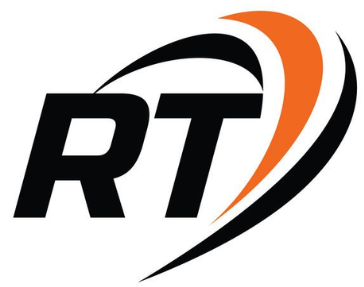In the ever-evolving landscape of the modern workplace, the concept of CFBWH (Collaboration, Flexibility, Balance, Wellness, and Human-centricity) has emerged as a guiding principle that is reshaping how organizations operate. This framework is not just a trend but a necessary response to the shifting demands of both employees and employers in an increasingly digital and globalized world. This article delves into the core elements of CFBWH, exploring how these principles are transforming workplaces, driving innovation, and fostering a culture of well-being and productivity.
Collaboration: The Cornerstone of Success
Collaboration has always been a fundamental aspect of any successful organization. However, in the age of digital transformation, the way collaboration is facilitated has undergone a significant shift. The rise of remote work, virtual teams, and advanced communication tools has made it possible for teams to work together from different parts of the world, breaking down geographical barriers and enabling a more diverse and inclusive workforce.
The essence of collaboration within the CFBWH framework lies in creating environments that encourage open communication, knowledge sharing, and collective problem-solving. This is achieved through the use of collaborative technologies such as cloud-based platforms, video conferencing, and project management tools that allow team members to contribute in real-time, regardless of their location.
Moreover, organizations are increasingly adopting agile methodologies that prioritize collaboration over hierarchical structures. By fostering a culture of teamwork and shared responsibility, companies can drive innovation and adaptability, essential components for thriving in today’s fast-paced business environment.
Flexibility: Adapting to the New Normal
Flexibility has become a critical factor in attracting and retaining talent in the modern workforce. The COVID-19 pandemic accelerated the adoption of flexible work arrangements, with many organizations realizing the benefits of allowing employees to work from home or choose their work hours. This shift has highlighted the importance of providing employees with the autonomy to manage their work-life balance, leading to increased job satisfaction and productivity.
In the context of CFBWH, flexibility extends beyond just remote work. It encompasses a broader range of practices, including flexible hours, job sharing, and the option to choose the tools and technologies that best suit individual work styles. By embracing flexibility, organizations can create a more inclusive and diverse workforce, accommodating the needs of different demographics, including working parents, caregivers, and those with disabilities.
However, implementing flexibility requires a fundamental shift in organizational culture. Leaders must trust their employees to deliver results without micromanaging, and there must be clear communication of expectations and performance metrics. This cultural shift is essential for organizations to fully realize the benefits of flexibility and create a more resilient and adaptable workforce.
Balance: The Key to Sustainable Productivity
Work-life balance has long been a topic of discussion in the workplace, but it has taken on new significance in the era of CFBWH. With the lines between work and personal life becoming increasingly blurred, especially with the rise of remote work, achieving a healthy balance is more important than ever.
Balance within the CFBWH framework is about creating an environment where employees can thrive both professionally and personally. This involves not only providing flexible work arrangements but also promoting a culture of respect for personal time. Organizations can support work-life balance by encouraging regular breaks, setting boundaries around after-hours communication, and offering benefits such as parental leave, mental health days, and wellness programs.
Moreover, balance is closely linked to employee well-being and productivity. Research has shown that employees who feel supported in maintaining a healthy work-life balance are more engaged, less stressed, and more likely to stay with their employer. By prioritizing balance, organizations can reduce burnout and turnover, leading to a more stable and motivated workforce.
Wellness: A Holistic Approach to Employee Well-being
Employee wellness is no longer just a perk; it is a business imperative. The CFBWH framework recognizes that the well-being of employees is directly linked to organizational success. This holistic approach to wellness encompasses physical, mental, and emotional health, creating a supportive environment where employees can bring their best selves to work.
Wellness programs are now a standard offering in many organizations, but the CFBWH approach takes it a step further by integrating wellness into the fabric of the workplace. This includes designing workspaces that promote physical health, such as ergonomic furniture and standing desks, as well as providing access to fitness facilities and healthy food options.
Mental health is also a critical component of wellness, and organizations are increasingly offering resources such as counseling services, mindfulness programs, and mental health days. Creating a culture of openness and support around mental health issues is essential for reducing stigma and ensuring that employees feel comfortable seeking help when needed.
Furthermore, emotional wellness is addressed through initiatives that promote a sense of purpose, belonging, and connection. This can be achieved through team-building activities, recognition programs, and opportunities for personal and professional growth. By taking a holistic approach to wellness, organizations can create a more engaged and resilient workforce.
Human-centricity: Putting People at the Heart of the Workplace
At the core of the CFBWH framework is the principle of human-centricity. This involves designing workplaces and policies that prioritize the needs, values, and well-being of employees. In a human-centric workplace, employees are not just seen as resources but as individuals with unique strengths, aspirations, and challenges.
Human-centricity is reflected in various aspects of the workplace, from the design of physical spaces to the development of leadership styles. For example, open-plan offices that promote collaboration and transparency, quiet zones for focused work, and spaces for relaxation and socialization all contribute to a human-centric environment.
Leadership plays a crucial role in fostering a human-centric workplace. Leaders who prioritize empathy, active listening, and inclusive decision-making create a culture of trust and respect. This, in turn, leads to higher levels of employee engagement, satisfaction, and loyalty.
Moreover, human-centricity extends to how organizations approach diversity and inclusion. By recognizing and valuing the diverse backgrounds, perspectives, and experiences of employees, organizations can create a more inclusive and innovative culture. This not only benefits employees but also drives business success by fostering creativity and improving problem-solving.
The Future of Work: Embracing CFBWH
As organizations continue to navigate the complexities of the modern workplace, the CFBWH framework offers a roadmap for creating environments that support collaboration, flexibility, balance, wellness, and human-centricity. By embracing these principles, organizations can not only attract and retain top talent but also drive innovation, productivity, and long-term success.
The future of work is undoubtedly shaped by these evolving demands, and organizations that fail to adapt may find themselves at a competitive disadvantage. However, those that prioritize the well-being and needs of their employees, while fostering a culture of collaboration and innovation, will be well-positioned to thrive in the new world of work.
In conclusion, CFBWH is more than just a set of guidelines; it is a mindset that reflects the changing expectations of the workforce and the evolving nature of work itself. By adopting this framework, organizations can create a workplace that is not only productive and innovative but also supportive, inclusive, and sustainable for the future.

